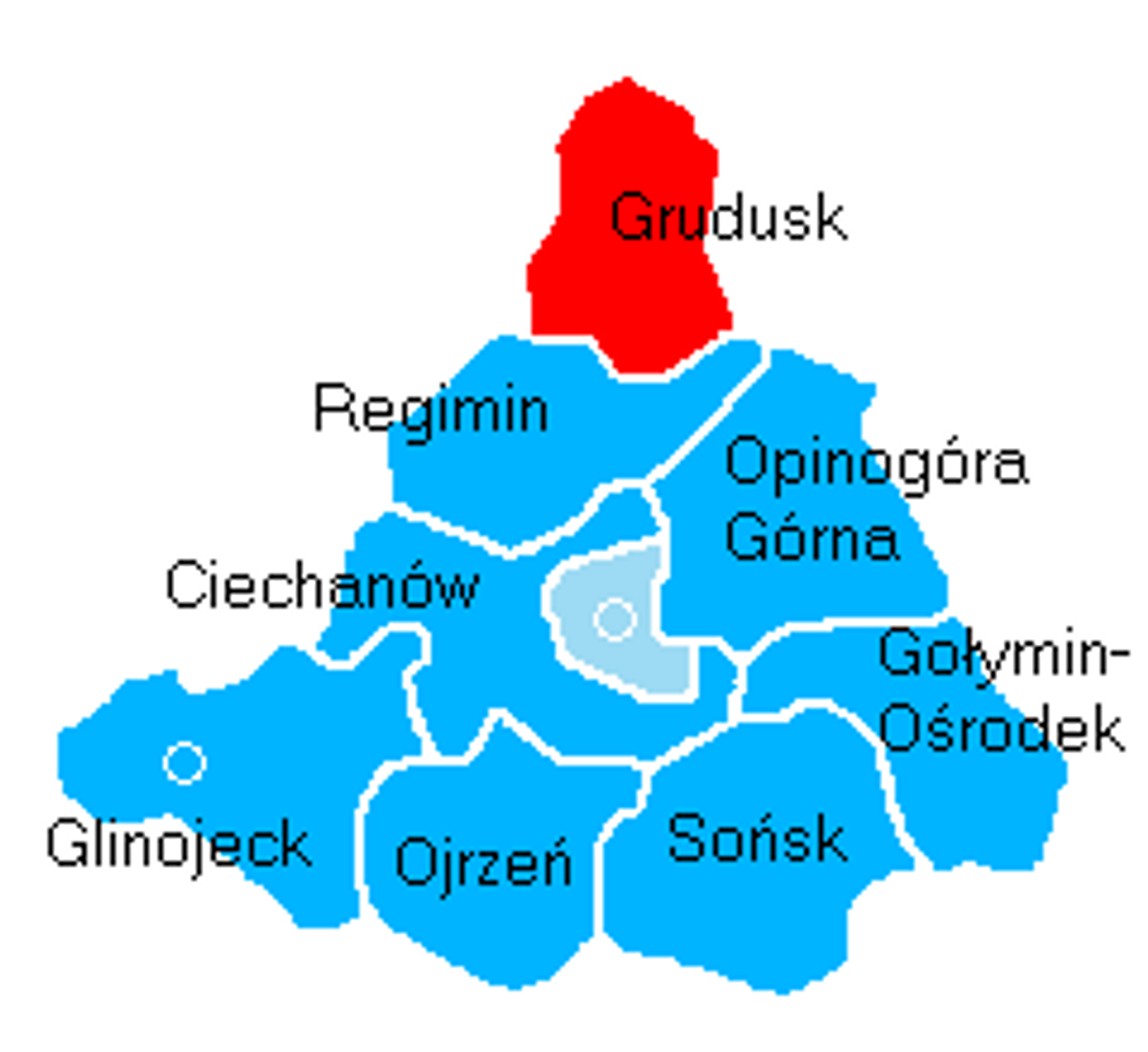Grudusk
6.47

Overview
Grudusk is a rural commune located in the Masovian Voivodeship, within the Ciechanów County. From 1975 to 1998, it belonged to the former Ciechanów Voivodeship. Its administrative seat is the village of Grudusk. The commune covers an area of 96.69 km², of which 91% is agricultural land and 4% is forested. It is one of the areas in Poland where the social and economic structure is dominated by agriculture. As of June 30, 2004, the commune had a population of 3,927, and by the end of 2017, the population had decreased to 3,659 people.
Grudusk comprises several village districts (sołectwa), including Borzuchowo-Daćbogi, Humięcino, Purzyce, and Stryjewo. There are also settlements within the commune that do not hold the status of a village district, such as Pszczółki-Czubaki and Stryjewo Małe. These village districts vary in size and character, reflecting the cultural richness of the region. The commune borders other municipalities, including Czernice Borowe, Dzierzgowo, Regimin, Stupsk, and Szydłowo.
Historically, Grudusk showcases local agricultural traditions, and the region's architecture often reflects bygone eras, although there are few monuments of significant architectural value. Interestingly, the commune has maintained a stable population over the years, which may indicate strong ties between the residents and their land and traditions.
In 2014, an age pyramid of the commune's inhabitants was created, providing a better understanding of the area's demographic structure. The culture and customs in Grudusk are deeply rooted in rural traditions. Residents often organize local events that serve as opportunities for community integration and the preservation of local heritage. Although Grudusk is not a major urban center, it plays a significant role in maintaining small-town culture and local values, making it an interesting place to live and visit.
Location
2025 Wizytor | All Rights Reserved